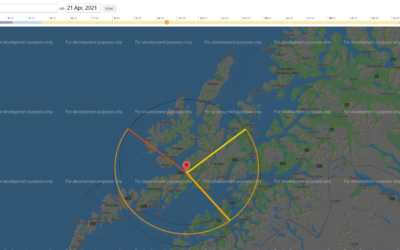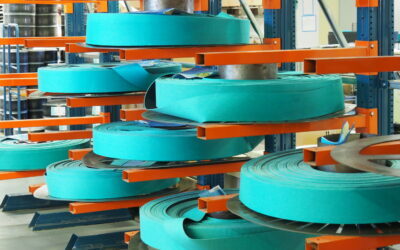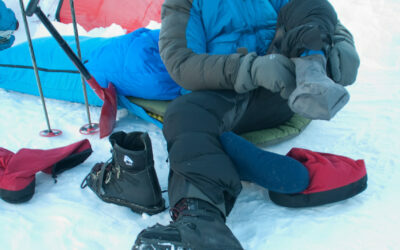Run to the hills – safely
It’s increasingly common for skiers to begin their career with alpine touring equipment, skipping the groomers and heading straight to the mountains. Great. But it’s worthwhile remembering that many of the best skiers started their development in resorts, moving on to riding off-piste and then gradually progressing to summit tours and big mountains, frequently accompanied by mentors and friends who knew more than them about the challenges of more perilous terrain. Not least avalanches.
Those who begin their development in the mountains, in other words, don’t start with the same foundations as those with a long skiing background. That is: they start without the same accumulated knowledge, experience and intuition of avalanches and navigation in the winter backcountry. Before you throw yourself into alpine touring, splashing a month’s salary on brand new equipment, it may be wise to prioritise spending on knowledge. There’s no gear better. Turning up with a snow probe in its wrapper and your beacon in the box is not, honestly, the best look. Being a good skier and avalanche-wise are different things. It’s not a case of beacon on, brain off.
The avalanche card. A useful tool to have in your map folder. Knowledge of terrain and navigation is essential. Photo: Crister Næss v/ Åsnes
“Experience” or experience?
There’s a difference between “experience” and experience. This might seem a strange sentence. But if you were to avoid an avalanche for years, maybe your entire career as a skier, with no feedback on whether this was out of sheer luck or consummate mountain-craft, one can’t really say this constitutes experience.
Experience of this kind, alone, isn’t enough. Knowledge about avalanches must be based on facts, reflection, a store of verifiable knowledge and founded on practical experience in controlled environments. Just going out into the mountains and “learning” things, without knowing what you’re doing, leaves you ignorant of what you don’t know. And some of those gaps may be essential. As far as avalanches and the layers the constitute the snowpack are concerned, the toolbox you assemble on a course or two, systematically, with direct feedback, with processual decision-making, theory, and learning through trial and error acquired in orderly conditions, are what’s required if “true” experience, in all its danger, were to intrude on you in the mountains..Reflection
We have to be honest here and say that after taking courses, acquiring some avalanche training, reading theory, applying what we learned in snow on days out and discussing things with people who know more than we do, the more we’ve realised that we’ve made some pretty stupid choices in the past. We have been lucky. That’s why “experience” is a loaded word as far as avalanches goes. To respect an avalanche is to understand the gaps in our knowledge, too. What really goes on down there, down in the layers?
The advantages of training
On an avalanche course, participants learn how to find and interpret information offered by the landscape. One learns to dig snow profiles; to conduct stability tests; to learn the proper context for conducting the tests you’re taught. One also learns to select a safe route, to classify and read terrain.
Nature offers us the clues we need to interpret the danger. We simply need to learn how to read these clues and to use them to our advantage. Your best protection on the mountain is the knowledge shared by all the members of the party. Those are the parties you want to join. A course confers quality knowledge you can test in practice – gained in a controlled environment, with supervisors who can give you feedback on what you can improve. Reflection is essential, even on the very best and finest of days. On your own in the mountains, you only get feedback when things have already gone wrong..
On an avalanche course. Here, participants learn gradient measurement, terrain assessment and classification. Photo: Crister Næss v/ Åsnes
Before you head out
Be sure of what you know. Get an idea of what you don’t.
- Take an avalanche course. This is the best way to learn how to plan and execute trips to new summits and how to use avalanche equipment in an emergency.
- Get the equipment you need. As a minimum, you need a shovel, a beacon, and a probe. You’ll need a pack suitable for alpine touring on skis (and this doesn’t necessarily mean a pack equipped with an avalanche airbag!)
- Read. Watch instructional videos. Go through the “avalanche school” at varsom.no (or an equivalent in your language).
- Read theavalanche warnings! Not just the headlines, either. The details about the risk assessments and snow cover are vital.
- Use aids such as Bratthetskart or RegObs and weather alerts – but remember your emergency powerbank.
- Order a free avalanche card from NVE and use it as a to-do list before and during your tur.
Learn to use the equipment
We agree with Kjetil Brattllien. Equipment is all about ASSS: always shovel, sender-receiver and snow-probe (“alltid spade, sender/ mottaker og søkestang”).
This is your minimum essential gear, every bit as important as your skis. All the essential planning, avalanche warning due diligence and in-the-field snow assessments you’ve done are vital – but learning how to use emergency equipment is the difference between life and death should the unthinkable happen..
- Practice and master off-piste skiing in various snow conditions.
- Practice using your avalanche and search equipment. In an avalanche situation, minutes saved can save lives.
- Learn to identify gradients. You need to know where the terrain becomes 30° or steeper. This applies both where you are and above you.
- Make assessments by group discussion as you go. Learn from each other. This is how good judgments are made. The statistics show that women make better judgments than men when it comes to travelling through mountains. If you’re a man, and you’re lucky enough to be traveling with one or more women, it’s a good idea to listen to them.
- Follow the Mountain Code (ut.no).

First aid essentials for a dog
You don’t need to go over the top when putting together first aid equipment for your dog. But it’s good to be prepared for the most common and critical situations that can arise out in the wilds.

Digital tools for the ski tour
Don’t give up if your go-to spots are snowless or unskiable wastes. There could well be untouched, soft powder in them there hills! Read on to find digital tools for finding the white stuff when all hope is lost…

So – what exactly is a skin, anyway?
Skins are more than a strip of carpet with glue on the back. They’re tools designed to help us in pursuit of pristine snow, perfect lines, and/or solitude. Something this magical demands a proper description of how it’s made.

Avalanche skills: how to quickpit
You’re ascending a mountain. You need to assess the stability of the snow. While being safe requires gathering information every step of the way, it’s also true that no one wants to spend an hour in a snowpit, especially in bad weather. So let’s talk about “quickpits” – an efficient snow-profiling method that serves as a very good middle ground for gathering information about snow cover. The technique’s used frequently by experienced guides to gather useful – if incomplete! – intelligence while keeping toes and fingers warm. Here’s how it’s done.

Handling hypothermia
Do you know what to do when you’re faced with someone dangerously cold? Command of the basic facts can be lifesaving – and this is just as relevant for us those of us who hit the mountains for the joy of it as it is for guide and members of the rescue services.

The dog’s mountain code
Norwegian vets say that holiday periods mean more enquiries. The Åsnes Academy has excellent articles on care for your dog in the mountains, including first aid. Here, however, we’ve chosen to put together what we call “the dog’s mountain code” – with some very specific tips for things like the Easter holiday.